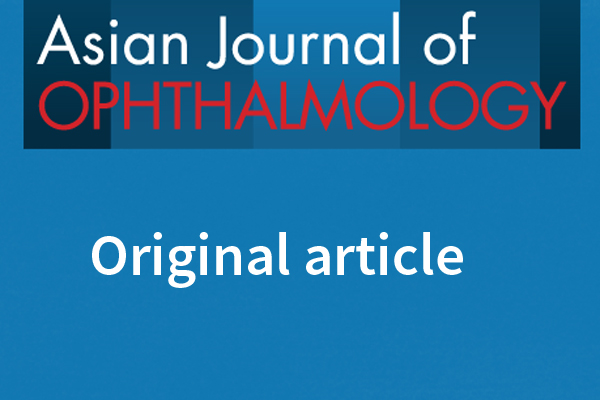Prevalence of severe visual impairment and barriers to access eye care services in the Udupi district
Abstract
Aim: To assess the prevalence of severe visual impairment (SVI) and reasons for not accessing eye care services in a field practice area of a tertiary care hospital.
Study design: Cross-sectional observational study.
Materials and methods: Through a cross-sectional study using simple random sampling, a total of 1510, individuals above 18 years of age, from six rural and maternity welfare centers (RMCW) within a distance of 20 km from a tertiary hospital were approached. All participants underwent basic assessment of visual acuity, anterior segment evaluation using torch light, and answered a structured questionnaire on eye care.
Results: Of 1510 subjects, 267 had SVI (defined as visual acuity < 6/60 either in one or both eyes) with a prevalence of 17.7%. SVI was higher among men and those above 60 years of age (52.8%). Significant association was found between barriers to accessing eye care facilities and lack of knowledge to access health care (p = 0.004), lack of financial support (95% CI, p = 0.006), and social reasons (95% CI, p = 0.028). Prevalence of SVI among diabetics was 32.7% as compared to non-diabetics (OR: 2.630; 95% confidence interval: 1.864–3.712), and among hypertensives was 34.61% as compared to non-hypertensives (OR: 2.836; 95% confidence interval: 1.977–4.068).
Conclusion: In spite of being close to a tertiary care center, a prevalence of SVI in 17.7% of this population indicates a lack of knowledge regarding the importance of self-health care in subjects. This emphasizes the need to increase the awareness among the general public to access the ophthalmic health care facilities in order to improve the ocular health of the patients.
References
World Health Organization. Global data on visual impairments 2010. WHO Press;2010. Available from: http://www.who.int/blindness/GLOBALDATAFINALforweb.pdf.
Flaxman SR, Bourne RRA, Resnikoff S, et al. Global causes of blindness and distance vision impairment 1990-2020: a systematic review and meta-analysis. Lancet Glob Health. 2017;5(12):e1221-e1234. https://doi.org/10.1016/S2214-109X(17)30393-5. Epub: 2017 Oct 11.
Thylefors B. A simplified methodology for the assessment of blindness and its main causes. World Health Stat Q. 1987;40(2):129-141. Available from: https://apps.who.int/iris/handle/10665/48330.
Venkataswamy G, Brilliant G. Social and economic barriers to cataract surgery in rural south India. A preliminary report. Visual Impairment Blindness. 1981;405-68.
Morgan M, Calnan M, Manning N. Sociological approaches to health and illness. Beckenham; Croom Helm: 1985.
Shamanna BR, Dandona L, Rao GN. Economic burden of blindness in India. Indian J Ophthalmol. 1998;46(3):169-172.
Finger RP, Kupitz DG, Fenwick E, et al. The impact of successful cataract surgery on quality of life, household income and social status in South India. PLoS One. 2012;7(8):e44268. https://doi.org/10.1371/journal.pone.0044268. Epub: 2012 Aug 31.
Brilliant GE, James M, Lepakowski, Zurita B, Thulsiraj RD. Social determinants of cataract surgery. The Operations Research Group. Arch Ophthalmol 1991;109:584-589.
Censusindia.net. Available from: http://www.censusindia.net/results/summaryindia.html.
Balasubramanian D, Bhat KD, Rao GN. Factors in the prevalence of cataract in India: Analysis of a recent Indo-US study of age-related cataracts. Curr Sci. 1990;59:498-505.
Government of India. Census of India. Available from: http://www.censusindia.gov.in/2011-prov_results/prov_data_products_karnatka.html.
World Health Organization. Blindness and visual impairment. 2017 World Sight Day. Available from: https://www.who.int/blindness/world_sight_day/2017/en/
Vijaykumar V, John RK, Datta D, Tulasiraj RD, Nirmalan PK. Quality of life after community-based rehabilitation for blind persons in a rural population of South India. Indian J Ophthalmol. 2004;52(4):331-335.
Marmamula S, Khanna RC, Shekhar K, Rao GN. A population-based cross-sectional study of barriers to uptake of eye care services in South India: The Rapid Assessment of Visual Impairment (RAVI) project. BMJ Open. 2014;4(6):e005125. https://doi.org/10.1136/bmjopen-2014-005125.
National Programme for Control of Blindness and Visual Impairment by Government of India. Available from: https://dghs.gov.in/content/1354_3_NationalProgrammeforControlofBlindnessVisual.aspx.
Zhang G, Tham YC, Gong H, et al. Blindness, low vision and cataract surgery outcome among adults in Hohhot of Inner Mongolia: A Rapid Assessment of Avoidable Blindness (RAAB) study. Br J Ophthalmol. 2018;102(12):1653-1657. https://doi.org/10.1136/bjophthalmol-2017-311633
Srinivasan S, Swaminathan G, Kulothungan V, Raman R, Sharma T. Prevalence and the risk factors for visual impairment in age-related macular degeneration. Eye (Lond). 2017;31(6):846-855.
Singh MM, Murthy GV, Venkatraman R, Rao SP, Nayar S. A study of ocular morbidity among elderly population in a rural area of central India. Indian J Ophthalmol. 1997;45(1):61-65.
Dandona R, Dandona L, Naduvilath TJ, McCarty C, Rao GN. Utilization of eye care services in an urban population in southern India. Br J Ophthalmol. 2000;84:22–27.

Copyright (c) 2021 Lavanya G. Rao, Dushyant Sharma, Sulatha V. Bhandary, Divya Handa, Yogish Kamath

This work is licensed under a Creative Commons Attribution 4.0 International License.
Authors who publish with this journal agree to the following terms:
- Authors retain copyright and grant the journal right of first publication, with the work twelve (12) months after publication simultaneously licensed under a Creative Commons Attribution License that allows others to share the work with an acknowledgement of the work's authorship and initial publication in this journal.
- Authors are able to enter into separate, additional contractual arrangements for the non-exclusive distribution of the journal's published version of the work (e.g., post it to an institutional repository or publish it in a book), with an acknowledgement of its initial publication in this journal.
- Authors are permitted and encouraged to post their work online (e.g., in institutional repositories or on their website) prior to and during the submission process, as it can lead to productive exchanges, as well as earlier and greater citation of published work (See The Effect of Open Access).


